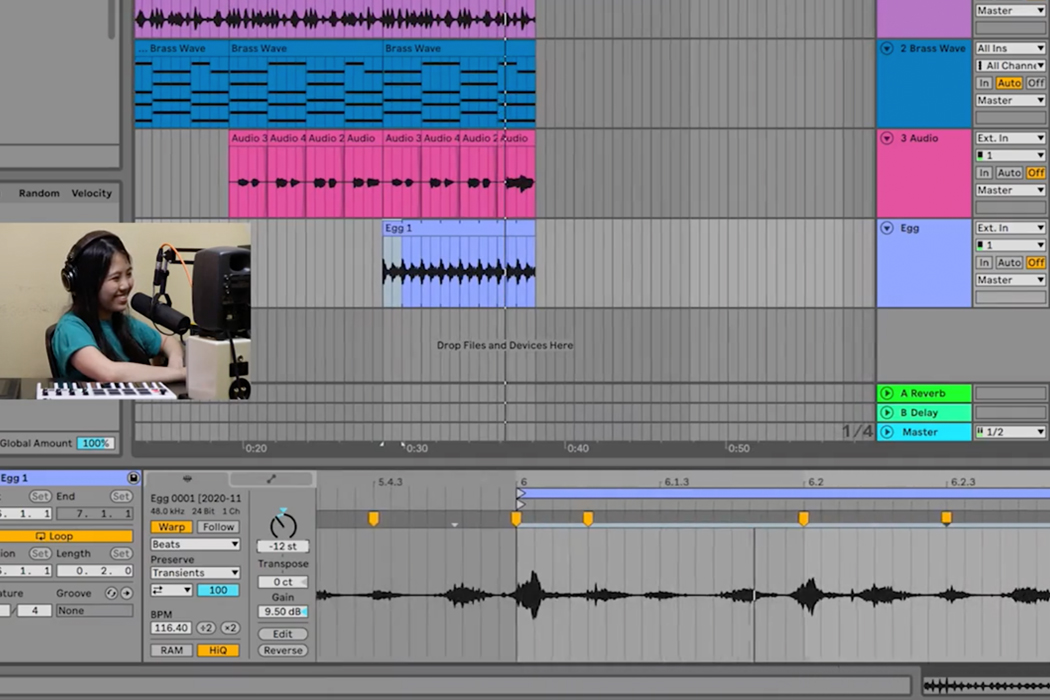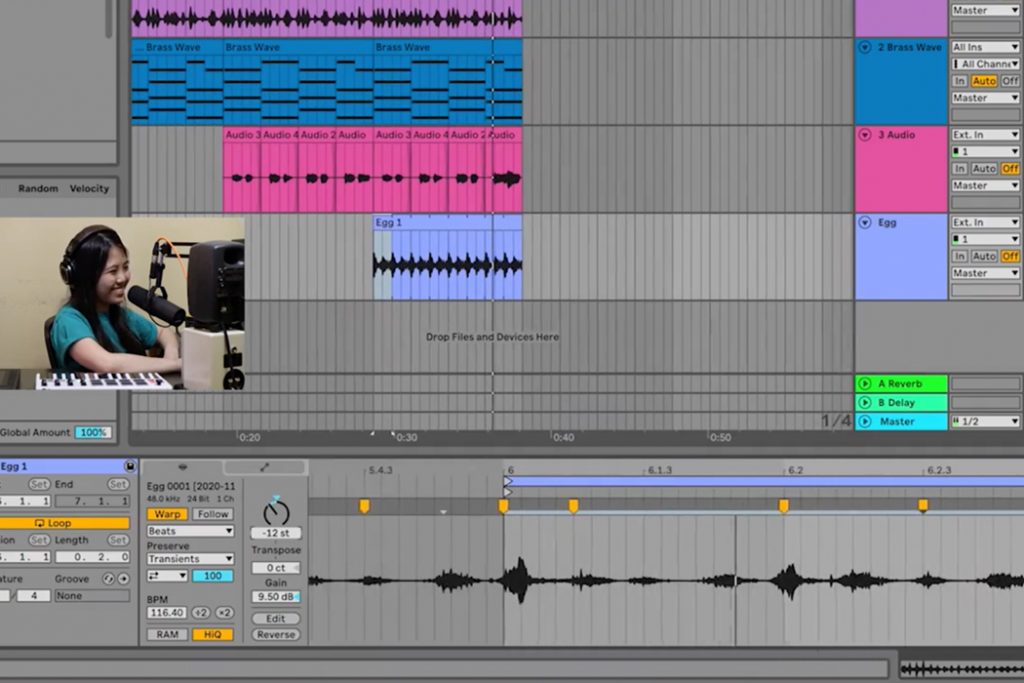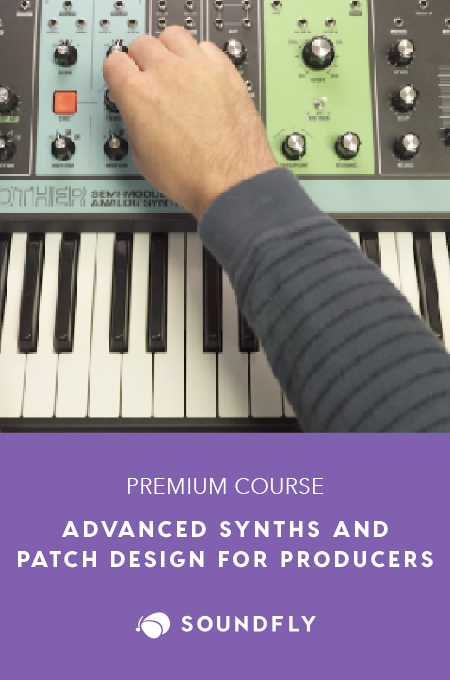
+ Recording and mixing your own songs? Check out Soundfly’s in-depth online music production courses, and get unlimited access by hitting that subscribe button.
From The Chipmunks to Rage Against The Machine, pitch-shifting has been part of music since recordings became part of popular culture.
What is it exactly? Pitch-shifting is any process, analog or digital, that transposes the notes generated organically or naturally by an instrument.
This transposition can be done according to the 12-note chromatic scale, microtonally, or land somewhere in between. We measure the degrees of microtonality using “cents,” where there are 100 cents between each of the 12 Western musical scale notes.
We all know that using pitch skillfully is one of the cornerstones of making great music. Having an understanding of some of the techniques here, and using them well, can help add depth and richness to your compositions as well as your mixes.
I’m going to leave aside vocal pitch-correction for the purposes of this article — that’s been covered right here on Flypaper however. In practice it’s sufficiently different from the techniques I’m going to describe here to kinda be its own thing.
Pitch-shifters come in two main flavors. Monophonic shifters can successfully shift one musical note at any given time, while polyphonic shifters can handle multiple notes at once, shifting entire chords either up or down. The ability of a shifter to transpose a note without introducing sonic artifacts, glitches, or losing the melodic information is referred to as tracking.
Some prize “clean” tracking, where complex chords can be shifted with maximum accuracy. But sometimes the wobbly, warbly sound of a less accurate tracking mechanism can impart mysterious and cool sounds; sounds that you might find creative applications for utilizing when exploring the pitch-shifting process.
Your Digital Tools
While pitch-shifting can be done in analog, today we’re going to focus exclusively on techniques that can be done inside a DAW. Lots of these techniques, however, are emulations of processes that used to be done on analog hardware.
Most DAWs ship with a native plugin that will allow you to shift the pitch of any given VST, with a greater or lesser degree of detail. Ableton Live is an exception — individual clips can be transposed up or down, but there is no track-based plugin that shifts recorded audio. My favored hack here is to use the Grain Delay’s transpose function to approximate the effect of a dirty, old-school shifter lights.
As usual, if you want to spend some time googling, there’s an assortment of paid and free third-party plugins you can experiment with in this field. And feel free to check out Soundfly’s online course, Intro to Music Production in Ableton Live, to learn more about making use of pitch-shifting and sample warping in your tracks.
Technique 1: Micro-Shifting (or “Detuning”)
This is a classic mix move that is used to add a sense of organic richness and depth to a sound. It can be used on a variety of sources, and is particularly good for adding “life” to otherwise sterile synthesized sounds. Think of a choir in a recital hall. Part of what makes this choir sound larger than life is how each singer hits the correct pitch but not down to the correct cent.
This variation accumulates into a pleasing and rich sound with movement embedded inside it. We can take this technique and recreate it in the box, landing on a sound that is similar too but not identical to chorus vocals in-person.
- Choose the track that you wish to detune
- Create two copies of that track
- Apply your pitch shifting plugin to these duplicates, setting one to +4 cents and the other to -4 cents.
- Adjust these two tracks to taste, noticing how the blend level changes your perception of the fundamental note relative to the ‘bigness’ of the sound
Bonus: Pan each of the adjusted tracks hard left and right, and, congratulations, you have just landed upon the classic “Micro Pitch Shift” sound of Eventide’s classic H3000 FX Processor!
As always, experimentation is your friend. Generally, you’ll get the most natural-sounding results by keeping your cent adjustments no larger than +10, and by focusing on melodic rather than percussive instruments. But really, what’s the worst that can happen from pushing the envelope?
+ Learn production, composition, songwriting, theory, arranging, mixing, and more — whenever you want and wherever you are. Subscribe for unlimited access!
Technique 2: Harmonic Shifting
In this technique, we use the harmonic series to create shifted notes that will deepen the harmonic depth of the source sound. I’m mainly talking octaves, fifths, and major/minor thirds, but anything is possible.
Using the same kind of duplicate-track technique described in Technique 1, experiment with some of the following ideas:
Rhythm section instruments lacking beef?
Take your kick, snare, or bass guitar/synth track and gently blend in a duplicate track that’s transposed down one octave. You want to be hearing extra oomph, but for things to still feel organic and present.
Backing vocals sounding dull or failing to cut through?
Take a duplicate shifted one octave up and adjust the volume to taste. Listen for a level where there is extra air and shine, but where you haven’t yet turned human vocals into “chipmunk” vocals.
Stuffy composers who say you can’t use parallel fifths have obviously never heard the guitar solo in Yes’s “Owner of a Lonely Heart.”
Since it’s no longer the 1980s, we can do techniques like this in our DAWs. They can sound particularly awesome as select spot FX on select vocal phrases, or as a general FX blend on a lead synth or instrument track. Get wild with it!
Ready for more?
Continue learning with hundreds of lessons on mixing, songwriting, DIY home recording, electronic music production, beat making, and so much more, with Soundfly’s in-depth courses, like Music Production in Ableton Live, Modern Pop Vocal Production, and The Art of Hip-Hop Production. Subscribe for unlimited access.






